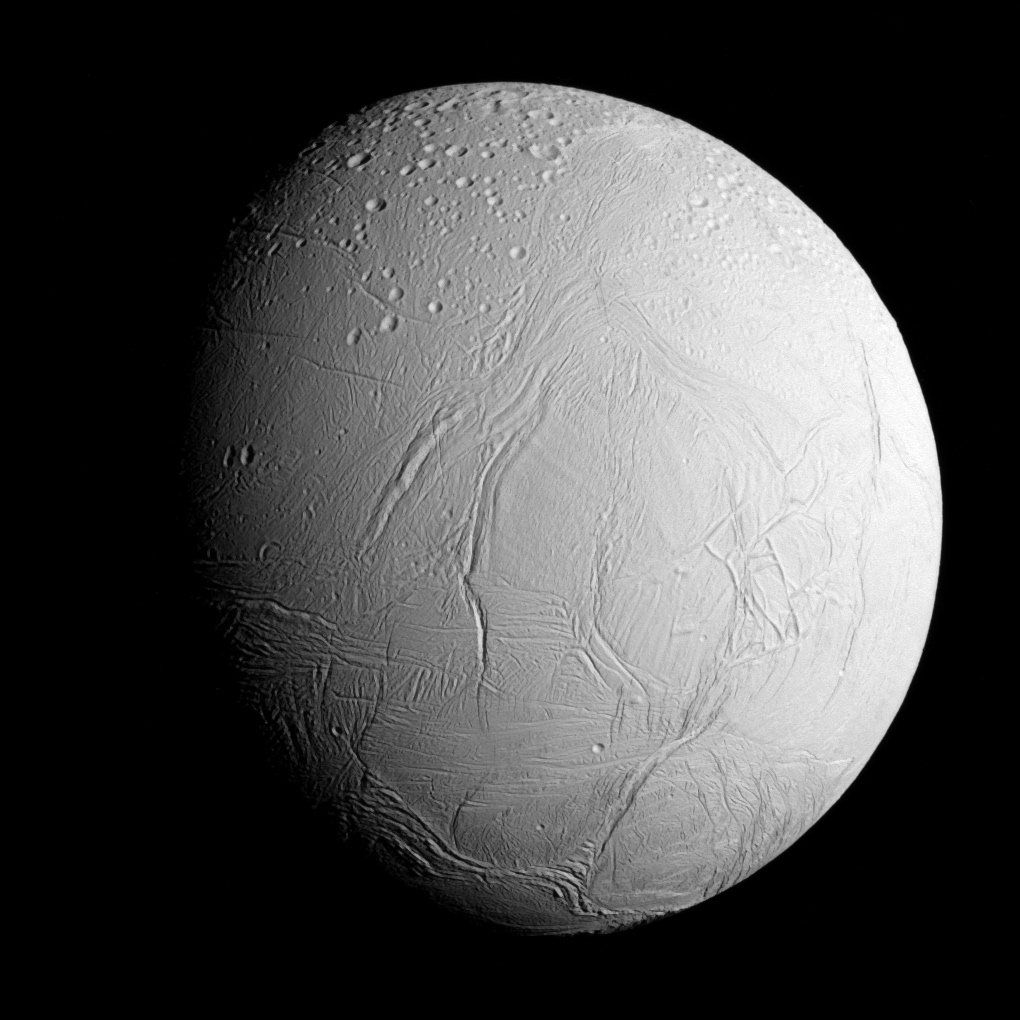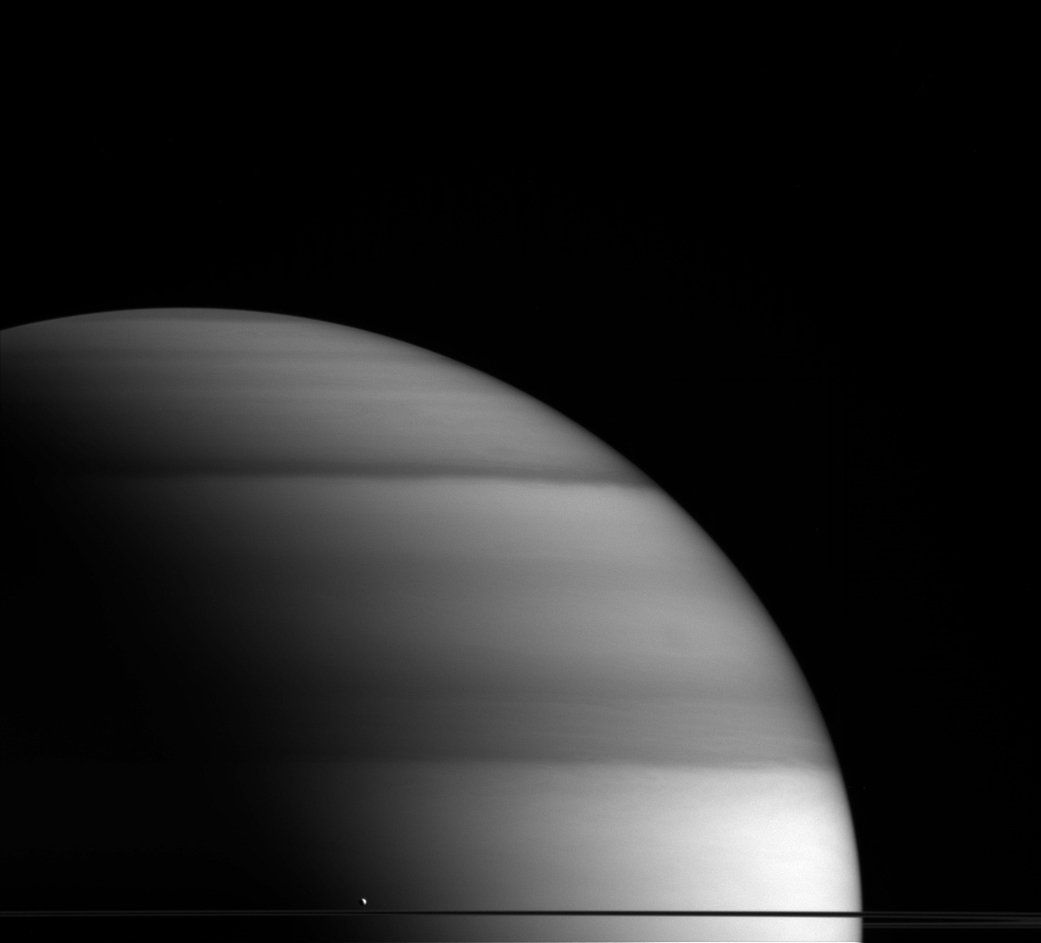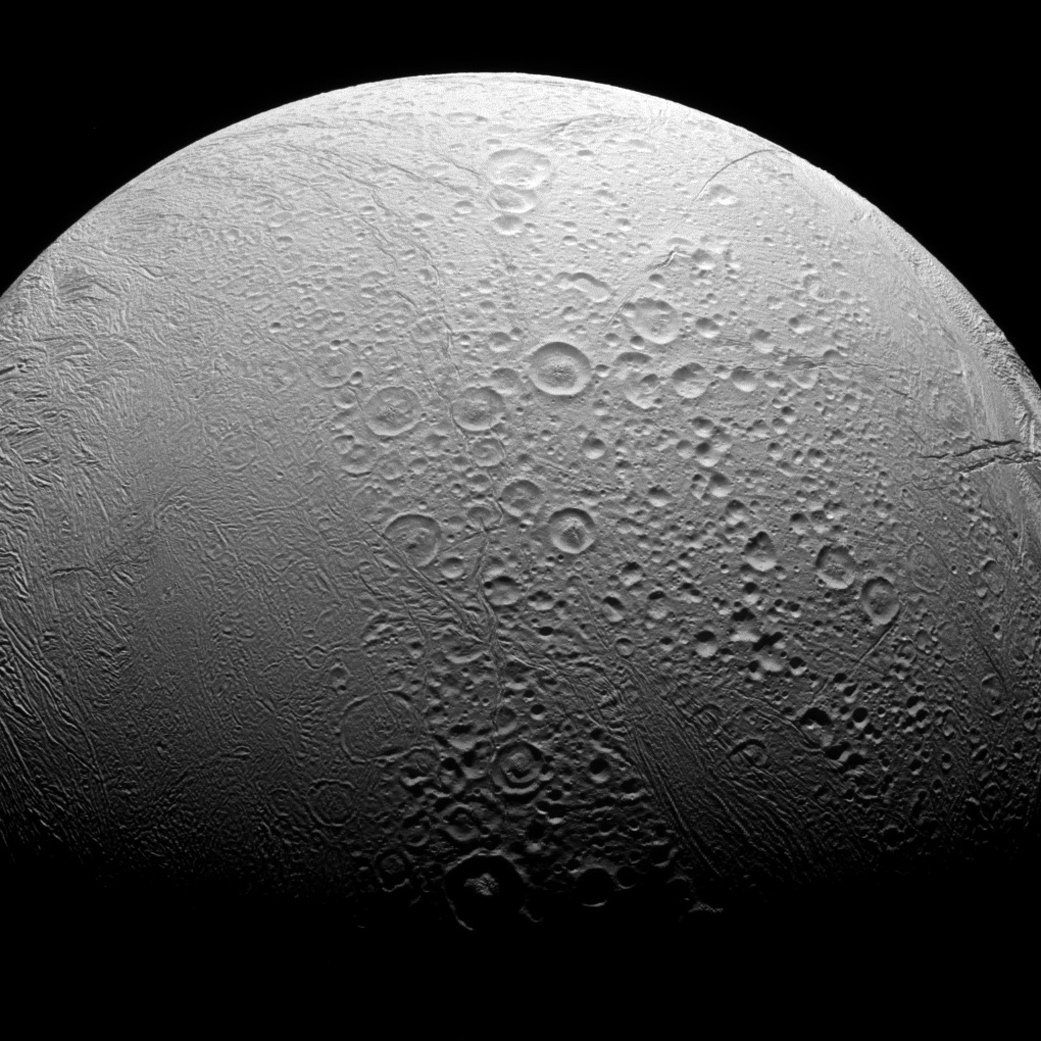This web page is created within BALTICS project funded from the European Union’s Horizon2020 Research and Innovation Programme under grant agreement No.692257.
Enceladus
Enceladus, which is about 500 km in diameter, is Saturn’s sixth-largest moon. It caught attention thanks to spectacular water vapour and ice geysers spotted by NASA’s Cassini spacecraft in 2005.
The tiny moon was spotted on 28 August 1789 by the English astronomer William Herschel when he was testing his new 1.2-metre telescope, which was the largest in the world at that time. The moon is named after the giant described in ancient Greek mythology. Interestingly, geological formations discovered on Enceladus are named after the Arabic collection of fairy tales “One Thousand and One Nights”.
Until the 1980s, when Voyager 1 and Voyager 2 passed near Enceladus, very little was known about Enceladus. Its orbit, approximate mass, density and light reflectivity have all been studied.
Enceladus is one of Saturn’s major inner moons. It moves along a slightly elongated orbit about 180,000 km from the giant planet’s atmosphere or 238,000 km from Saturn’s centre. Enceladus is located in the E ring and ice particles ejected from it replenish the ring with fresh material.
Enceladus completes one orbit around Saturn in about 33 Earth hours. As with almost all of Saturn’s larger moons, the same side faces the planet.
Because Enceladus’s orbit is elongated, Saturn’s gravitational influence on the moon is variable. This ensures that Enceladus deforms regularly, which is also thought to be the main reason why moon’s interior is warm enough to host an ocean of liquid water.
Enceladus is covered by water ice, making it one of the brightest objects in the Solar System. The moon reflects about 80% of the light it receives from the Sun, which ensures a very low surface temperature (about -200 °C). The surface of the moon is geologically very varied, in some places, there are craters up to 35 km in diameter and a smooth and homogeneous surface in others. The most interesting region is the south pole of the moon, which is covered by grooves and gullies and where famous geysers are located.
Cassini probe has detected water vapour, carbon dioxide, methane, nitrogen and various salts as it flew through these geysers. The ice particles ejected by the eruption fly at around 400 m/s.
They replenish the E ring, but some fall back to the surface. It is assumed that the source of the water ejected into the geysers is a global ocean beneath an ice crust 30 to 40 km thick. The depth of the ocean could be at least 10 km. The central region of the moon is made up of a core of solid rock and water ice.
These unique features make Enceladus one of the most promising places in the Solar System where conditions are favourable for the existence of life forms known to us.






















